Vietnam. The word itself invokes images of conical hats made from palm leaves and bamboo, saffron-robed monks receiving alms, and streams of sputtering motorbikes pumping through the narrow streets like blood in a calcified artery. Ho Chi Minh City is still referred by the locals as Saigon, and although it is no longer the capital of Vietnam, this high-octane city has certainly not lost it’s romance and mellow charms! From it’s jaw-dropping opium-raddled French colonialism, and Soviet-style housing blocks to its surprisingly unique cuisine, Saigon offers a little bit of everything for the history buff, explorers and foodie enthusiast.

All foreign nationals entering the Socialist Republic of Vietnam are required to obtain a visa. There are currently 46 countries that are allowed to receive a 30-day, single entry e-visa for 25 US$ through the Vietnam Immigration Department’s website and are permitted to enter and exit Vietnam through any of the 28 designated international checkpoints. Nationalities from other countries are required to obtain an approval letter from a Vietnamese travel agent for a service fee and produce it to the “Visa on Arrival” or “Landing Visa” counter at the Immigration at any of the three international airports in Hanoi, Ho Chi Minh City or Da Nang along with the Vietnamese visa application form, a passport-size photo and 25 US$ in cash for the stamp fee to collect the visa.
Ho Chi Minh City is split into 24 districts, 19 urban and 5 suburban districts with the Saigon River snaking its way at the center. Visitors rarely travel outside the districts One, Three and Five, and with the sheer number of trendy restaurants and bars at District One, it is undeniably where most of the action takes place and where the party’s at.
Tan Son Nhat International Airport is the largest airport in Vietnam, and serves Ho Chi Minh City and its surrounding metropolitan area. The airport has two terminals, one servicing the domestic flights and the other for international flights. It is 6 kilometers from District 1 and is relatively close and smaller compared to other international airports and big cities. There are daily direct flights to Frankfurt, China, Taiwan, Australia, Germany, UAE, Qatar, Hong Kong, South Korea and Japan. At present, there isn’t a terminal to serve low-cost carriers at Tan Son Nhat International Airport, however, Vietjet Air serves as an international low-cost airline and could have its own hub in Ho Chi Minh City in the future. Tan Son Nhat International Airport serves flights from Kuala Lumpur (2h 5m), Manila (2h 40m), Singapore (2h 10m), Bangkok (1h 45m) & more. You can also fly directly from other destinations in Vietnam including Hanoi (2h 5m), Da Nang (1h 20m), Hai Phong (2h), Hue (1h 25m), Nha Trang (1h), & Phu Quoc (1h).

It is ideal to visit during the dry and sunny season between December and April. However, March, April and May can be hot, with temperatures averaging between 36 and 38 degrees. The wet season runs from July to September, so expect heavy rains and frequent storms while many of the streets in the city will be flooded.

Taxi drivers in Ho Chi Minh City can be notorious. If you hail a taxi on the street, ensure that the meter is switched on when you start your trip, have your Google maps app open and keep a small change to pay for the metered fare when you arrive your destination, this is to avoid getting scammed and do not negotiate a fare before getting into a taxi. Grab taxis are highly recommended when going around the city center. It is convenient and affordable, especially if you are traveling with someone else or in a group since you’ll be able to share the cost. But, if you are traveling alone, Grab bike is the best option. I visited all the top attractions in Ho Chi Minh City on Grab bike and enjoyed it very much since I pre-planned a list of all the places that I wanted to visit and mapped it on Google maps and calculated the distances and the places that I wanted to move from one to the other, so I was clear where I needed to hail a Grab bike and where I needed to walk.
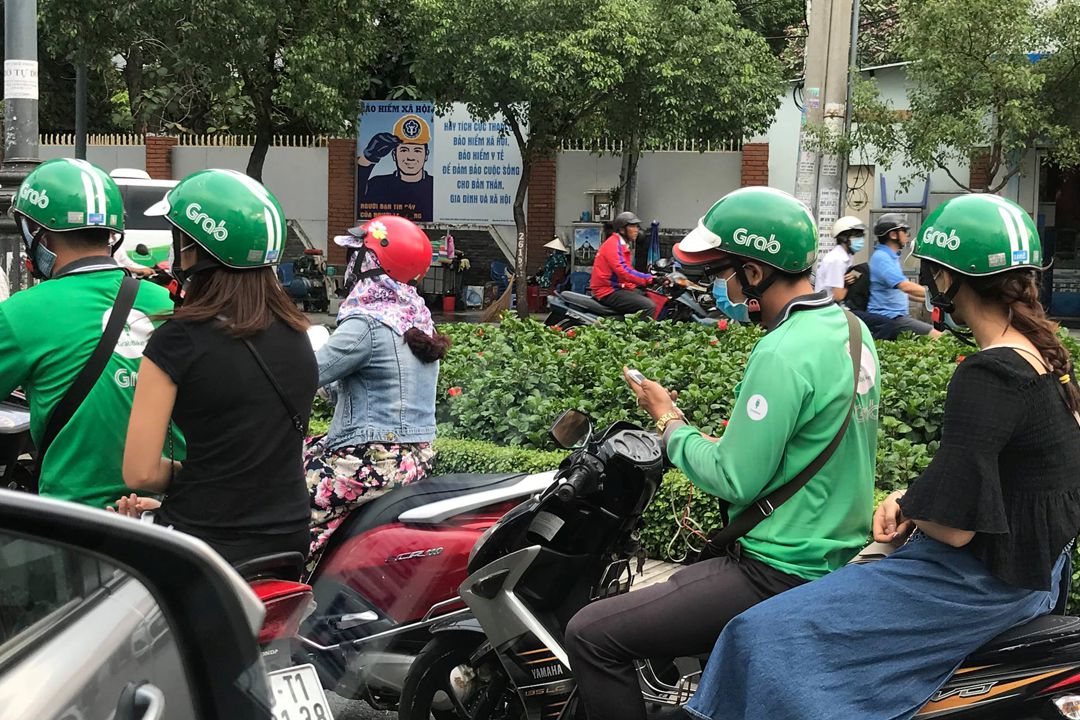
Grab bikes are convenient for solo travelers to get around the city center.
Many travel blogs often suggest booking group city tours, but I felt a lot more comfortable touring the city myself since I was able to move on my own pace from one location to the other, and I didn’t had to wait for anybody else to finish viewing an attraction before boarding a bus or a mini-van to proceed next. However, you’ll have to be very cautious about the motorbike bandits that snatch smartphones, cameras and backpacks. So, if you’re walking in public, even in broad daylight, please avoid flaunting your gadgets. Crossing roads in Ho Chi Minh City can be a horror show, unless you have grasped the art of wading through the rivers of motorbikes flowing through the streets (just launch into the traffic and don’t stop or hesitate).

There’s a wide range of choices for budget accommodation, and I recommend District 1, since it is a bustling hub of great restaurants, bargain shopping and fun nightlife. A night at a hostel starts at 93,000 VND, but 164,000 VND is the average, and the rates for hostels in Ho Chi Minh City don’t change by the season, they are very constant and affordable year round. While almost all the hostels offers free WiFi and air-conditioned dorms, there are few with on-site swimming pools and gymnasiums.
Koniko Backpackers Hostel (93,000 VND a night with breakfast)
Hideout Hostels Asia – Saigon (160,000 VND a night with breakfast)
Vietnam Inn Saigon (164,000 VND a night with breakfast)
Flipside HCM Hostel (164,000 VND a night)
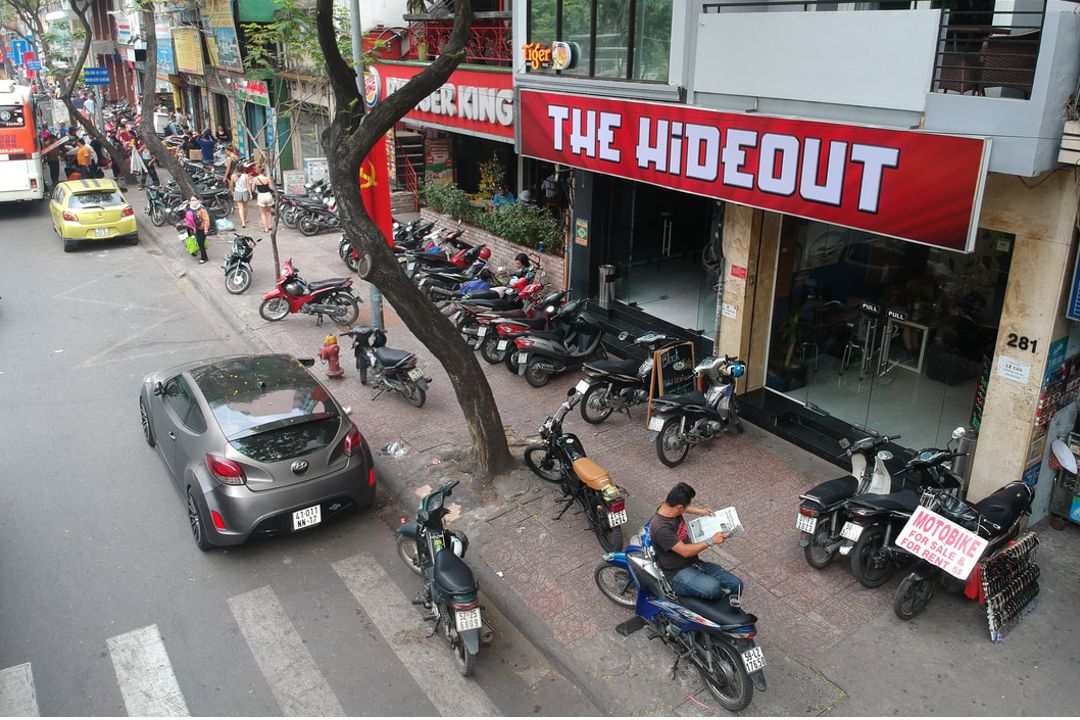
I stayed at the Hideout Hostel Saigon
 1. Take a Saigon Street Food Tour – Saigon was once referred as the “Kitchen of the World”, and it still feels very much that way today. In fact, whenever you feel like grabbing a bite, to satisfy your stomach or appetite, an eatery is no more than a minute’s walk from anywhere in District 1. If you are a serious foodie who wants to go off the beaten path on a cuisine-inspired adventure, look no further than Saigon Free Walking Tours. One of the best ways to understand this sprawling and frenetic city is to do their Saigon Street Food Tour of Ho Chi Minh City by Motorbike. I did this tour with them and was picked and dropped back at my hostel by one of their guides. We weaved our way through the intensifying traffic on a 4 hour food adventure one dish at a time. Although the tour is free, you’ll have to pay a small surcharge of 80,000 VND for the scooter and for you and your guide’s meals at the food establishments during the tour.
1. Take a Saigon Street Food Tour – Saigon was once referred as the “Kitchen of the World”, and it still feels very much that way today. In fact, whenever you feel like grabbing a bite, to satisfy your stomach or appetite, an eatery is no more than a minute’s walk from anywhere in District 1. If you are a serious foodie who wants to go off the beaten path on a cuisine-inspired adventure, look no further than Saigon Free Walking Tours. One of the best ways to understand this sprawling and frenetic city is to do their Saigon Street Food Tour of Ho Chi Minh City by Motorbike. I did this tour with them and was picked and dropped back at my hostel by one of their guides. We weaved our way through the intensifying traffic on a 4 hour food adventure one dish at a time. Although the tour is free, you’ll have to pay a small surcharge of 80,000 VND for the scooter and for you and your guide’s meals at the food establishments during the tour.
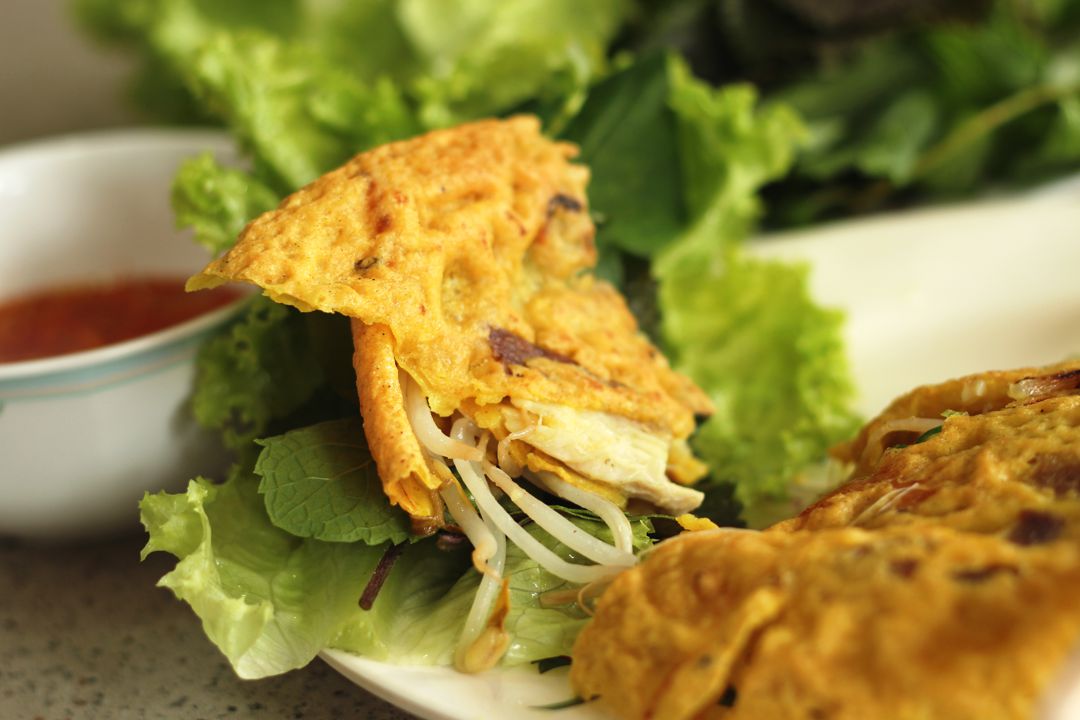
My favorite was Bánh xèo, means “sizzling pancake”.
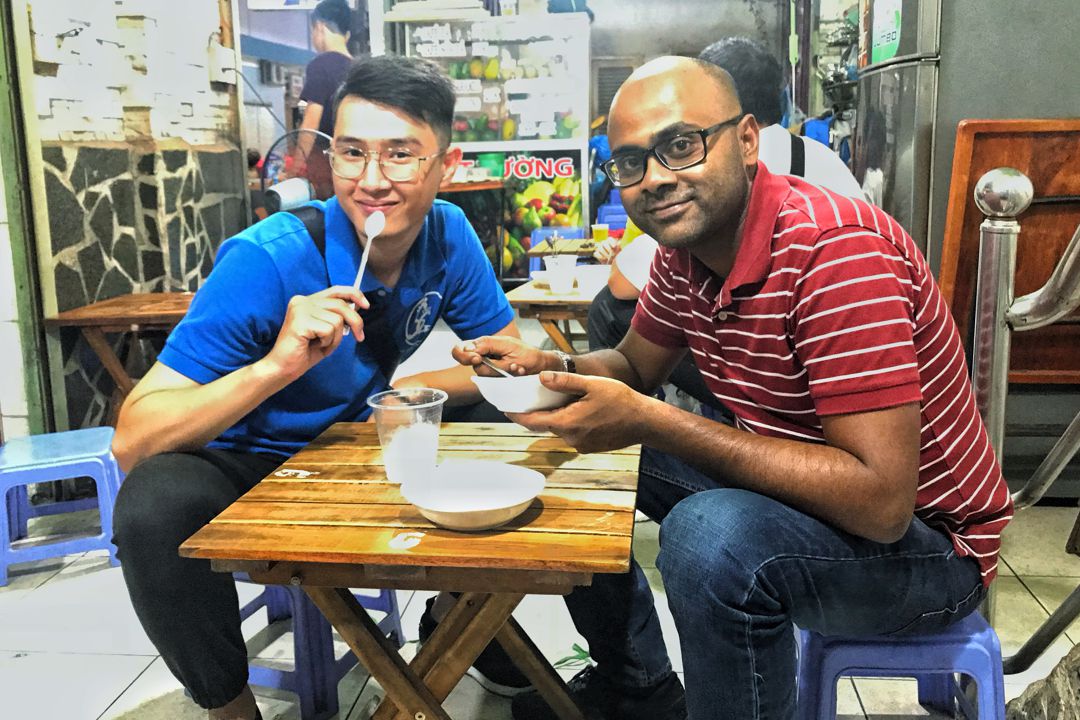
Anthony Bourdain taught us about food and its ability to bring us together.
2. Shop at Bến Thành Market – One of Ho Chi Minh City’s most prominent landmarks, the Bến Thành Market may not be the best location for shopping, but is certainly the most frequented place in the city by tourists. It is a huge bustling market where hundreds of local traders display eye-catching local handicrafts, apparels, souvenirs, silk fabrics, art, dodgy electronics, toys, jewelry, embroidery and brocade. There are also many food stalls that offer local dishes and guest dishes freshly made to the order.
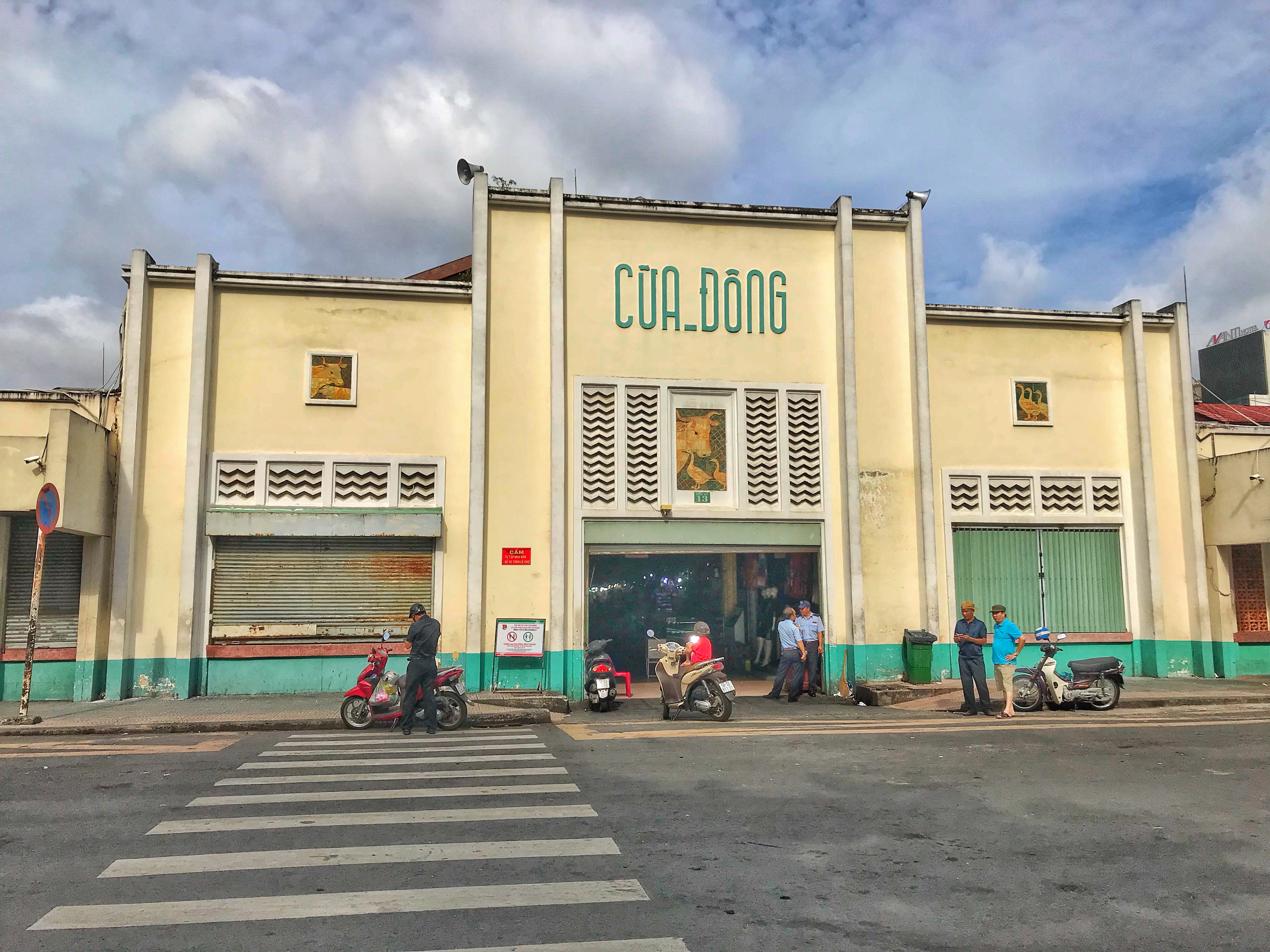
If you plan to buy something, it is very important that you know how to haggle.
3. Step back in time at the Reunification Palace (Independence Palace) – The official residence of the three former presidents of South Vietnam that ruled between 1966 and 1975. It is now called the Reunification Palace and is one of the most significant historical sites in Vietnam. This is also the site where the first communist North Vietnamese tanks crashed through the wrought-iron gates on the morning of April 30, 1975, resulting in the fall of Saigon. (Entrance: 40,000 VND).
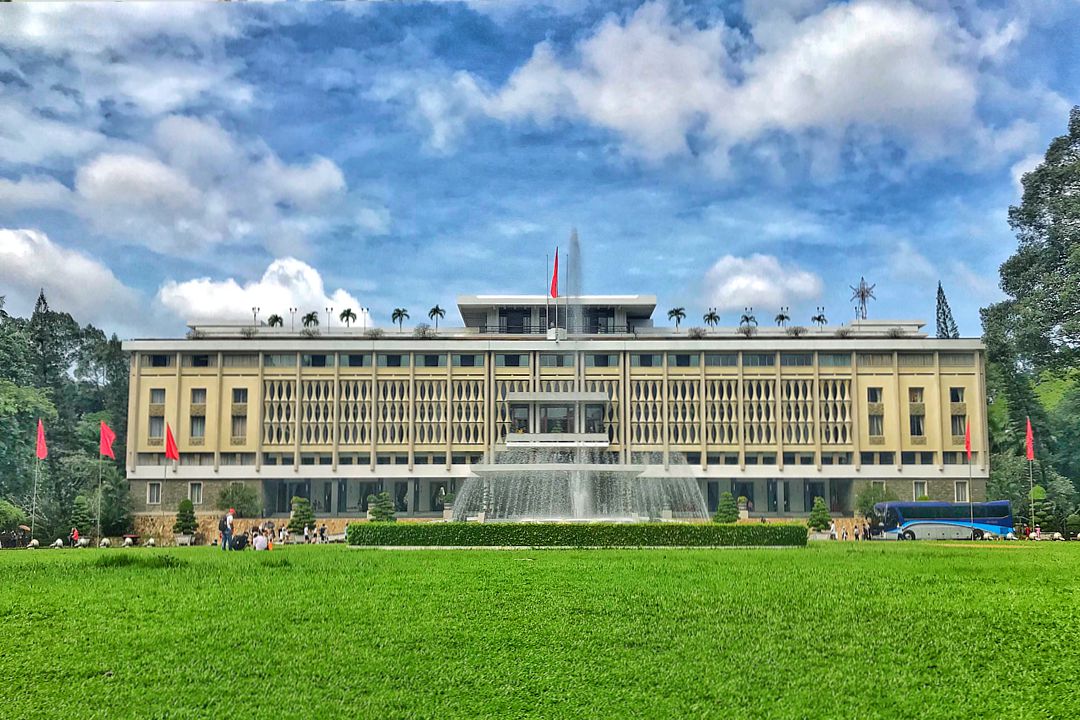
It is preserved as if time has stood still since then and there’s a lot more to this place.
4. Explore the War Remnants Museum – Not for the faint-hearted, the museum documents the atrocities that were committed during the Vietnam War and and the first Indochina War involving the French colonialists. Today, it remains as one of the most visited museums in Vietnam, and attracts over half a million visitors each year. The front yard of the museum displays retired military hardware and vehicles such as UH-1 “Huey” helicopter, attack bombers and even an M48 Patton tank. It’s a must-see for anyone wanting to explore the horrors of the Vietnam war. Be warned, the text and photographic exhibits are graphic and confronting – but they tell an important story. (Entrance: 40,000 VND).
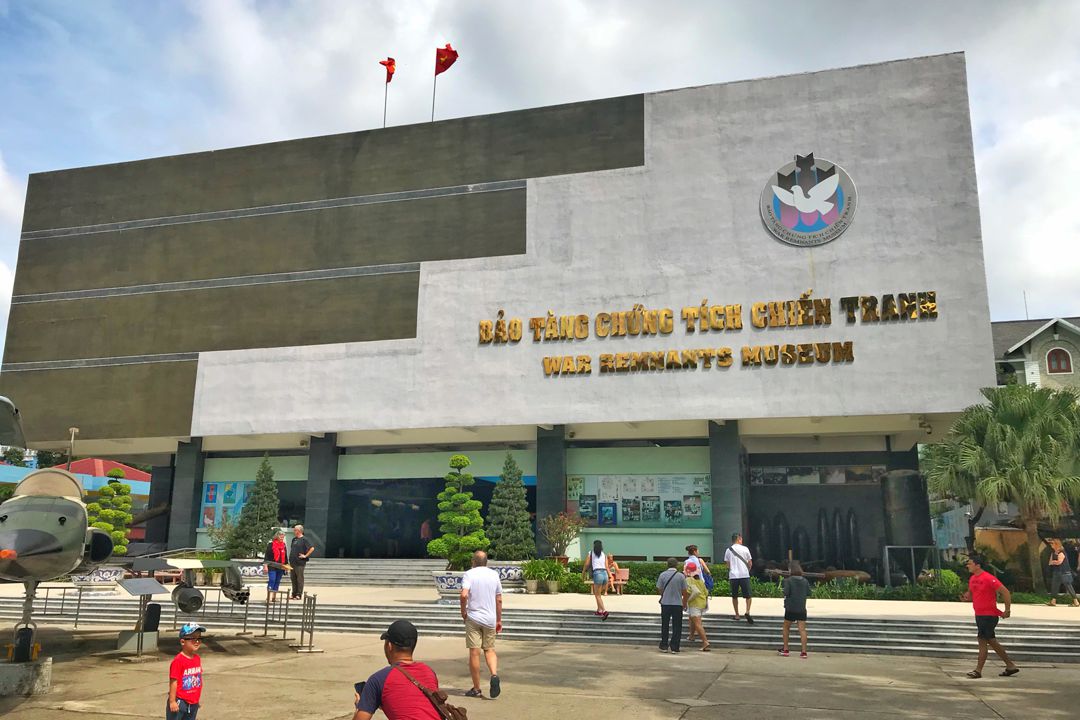
The museum is a must-see for anyone wanting to explore the horrors of the Vietnam war.
5. Admire the Saigon Central Post Office – It is no ordinary place to buy stamps, and is one of Vietnam’s finest examples of French colonial architecture. Built between 1886 and 1891 by French structural engineer Gustave Eiffel, who also designed the Eiffel Tower in Paris, the building’s vaulted roof and arched windows are reminiscent of early European railway stations. The functions of a post office still continue and foreign visitors are encouraged to send postcards to friends and family back home.
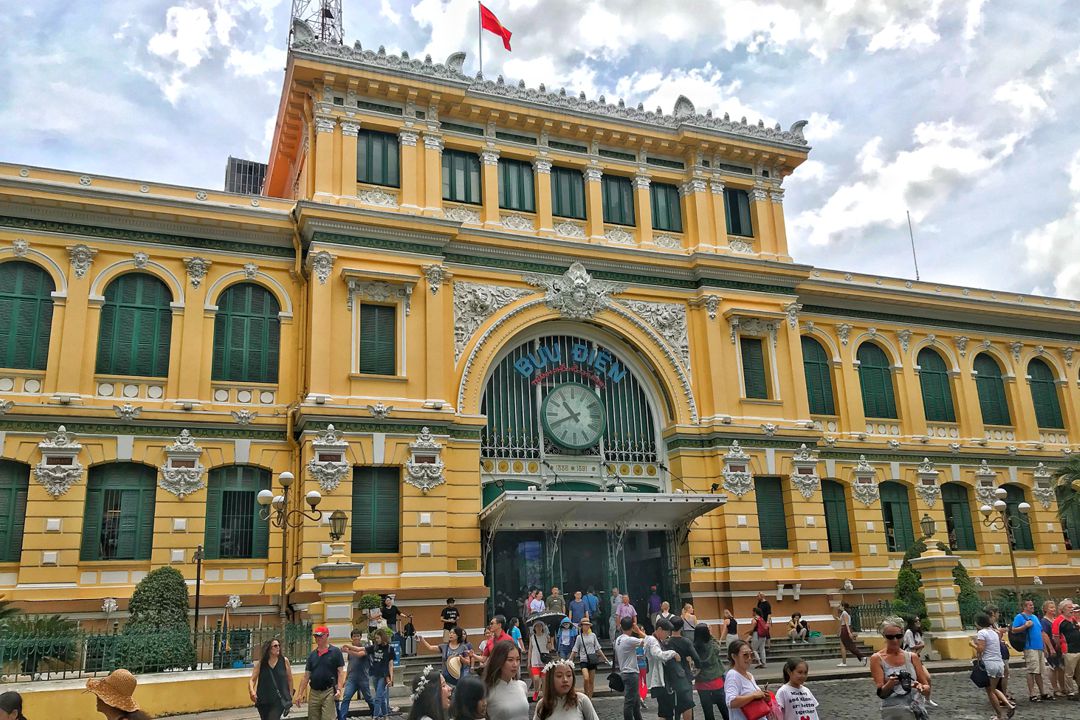
The Saigon Central Post Office is the largest post office in Vietnam.
6. Take in the grandeur of the Notre-Dame Cathedral Basilica of Saigon – Built in the late 1880s by French colonialists and constructed using materials imported from Marseille, the Notre-Dame Cathedral Basilica of Saigon is a bona fide symbol of Saigon. Standing at 60 meters, the cathedral’s unique Romanesque architecture boasts the all-red brick facade, stained glass windows, and two bell towers that house six bronze bells which continue to ring to this day.

The Notre-Dame Cathedral Basilica of Saigon is one of the few remaining strongholds of Catholicism in the largely Buddhist Vietnam.
7. Wander along Dong Khoi Street – No street better symbolizes 60 years of change in Saigon than Dong Khoi Street which has gone from being the center of charm during the French colonial times to the center of sleaze and intrigue during the Vietnam War. A walk along Dong Khoi Street will put you in touch with some of what remains in terms of grand French colonial architecture in the city.
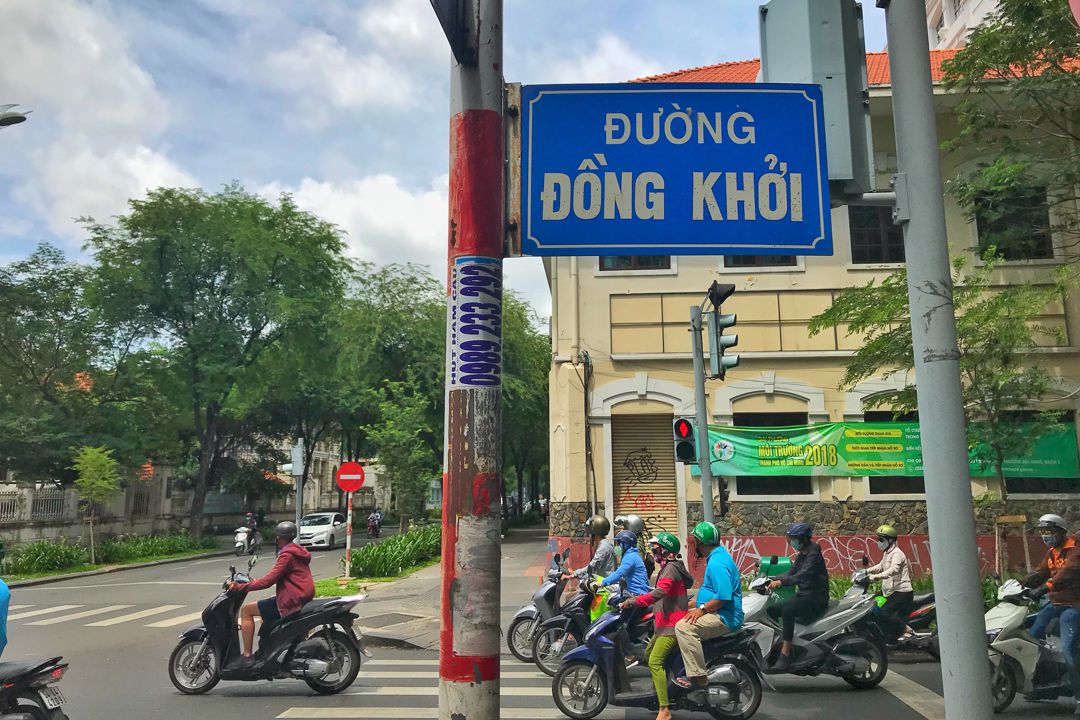
In recent years, international brands have begun settling the stretch that spans alongside the stylish local boutiques, cafes and restaurants.
8. Glimpse into Vietnamese nightlife at Bui Vien Street – In 1986 when the Vietnamese government allowed international commercial trade by opening Vietnam for foreign investment opportunities and tourism, the first tourists began arriving the Bui Vien street. Today, it has transformed into a bustling and dynamic area to cater both locals and tourists with tons of bars and boozing street vendors and the street never seems to sleep and the stores never seems to close.
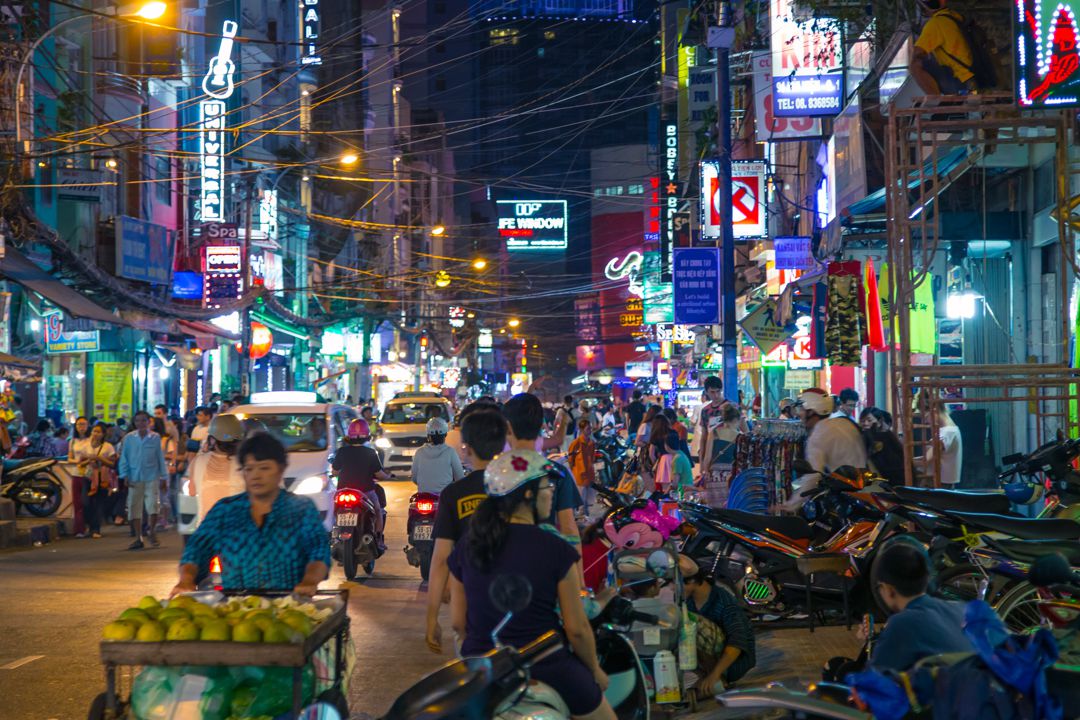
Every night is a wild scene of drunks, massage girls, gangsters and curious locals watching it all like live human theater.
9. Marvel at the elaborate architecture of the Thien Hau Temple – Also known as Chua Ba, Thien Hau is the oldest temple in Saigon and was built in 1760 by a group of Chinese immigrants and dedicated to Thien Hau, the Chinese sea goddess. The temple’s interior walls and roof are decorated with porcelain figurines that depict legends, and the pink tissue papers represent prayer flags with the names of donors. The atmosphere is filled with fragrant scents and swirling smoke from incense coils, urns, and large braziers.
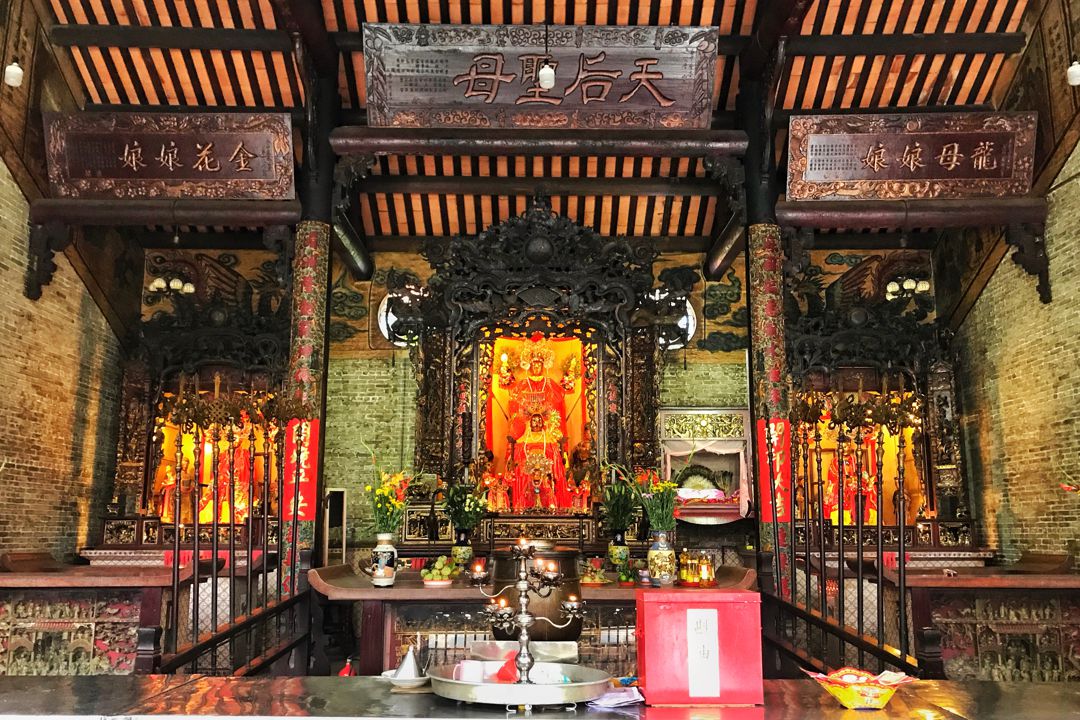
It is believed that Thien Hau protects and rescues ships and people on high seas while floating over a mat.
10. Lose yourself among the incense fumes of the Emperor Jade Pagoda – Built in the early 20th century by Chinese immigrants for their community to worship, the pagoda still serves as a place of worship for both Taoism and Buddhism. It features Cantonese-styled carvings that depict the deities. The century old pagoda was built to worship the Jade Emperor, the highest god of the Chinese Taoist pantheons. The structure houses three prayer halls with carvings of both Buddhist and Taoist figures.
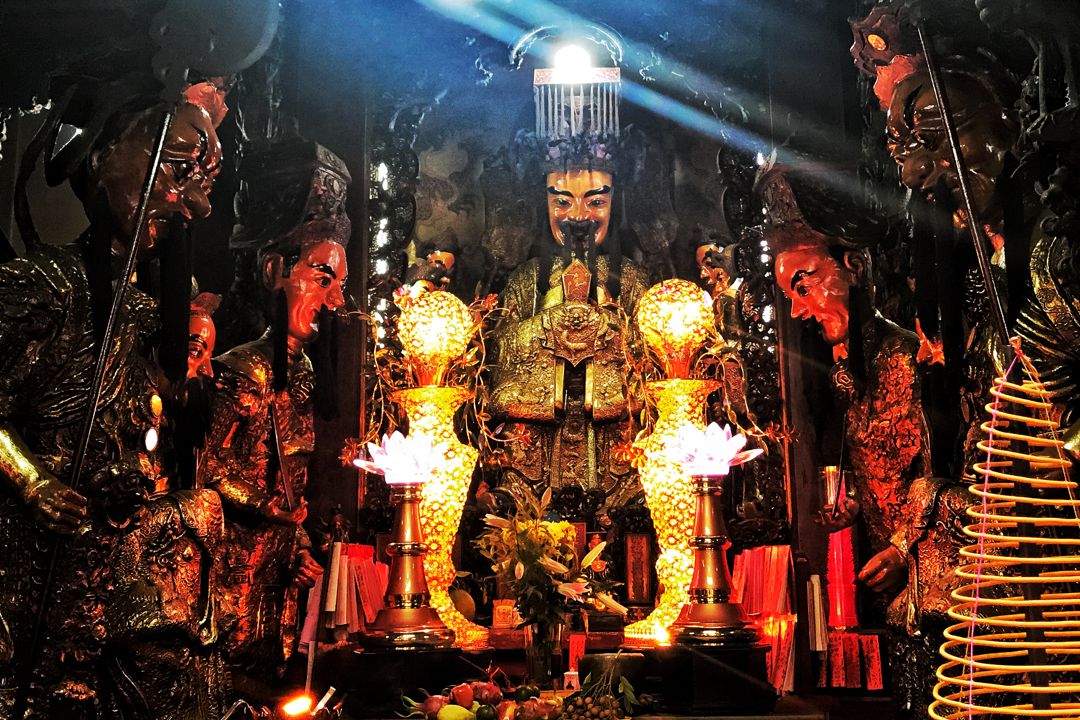
The statue of the Jade Emperor stands at the basement of the main hall, and are watched over by two demons.
11. Top off your historical tour of the Cu Chi tunnels – The tunnels are located in the Củ Chi District on the outskirts of Ho Chi Minh City, about seventy kilometers from the city. The tunnel network spans about 200 kilometers and was built by the Vietnamese revolutionary soldiers during the war to hide from the French colonialist’s rear, while being safeguarded by the Vietnamese civilians. The secret tunnels were constructed in so many different ways, but they were mostly underground, and each had a small lid with sufficient space for one person to move. When the lid is shut, the enemies above the ground had a tough time to detect the entrances to the tunnels.
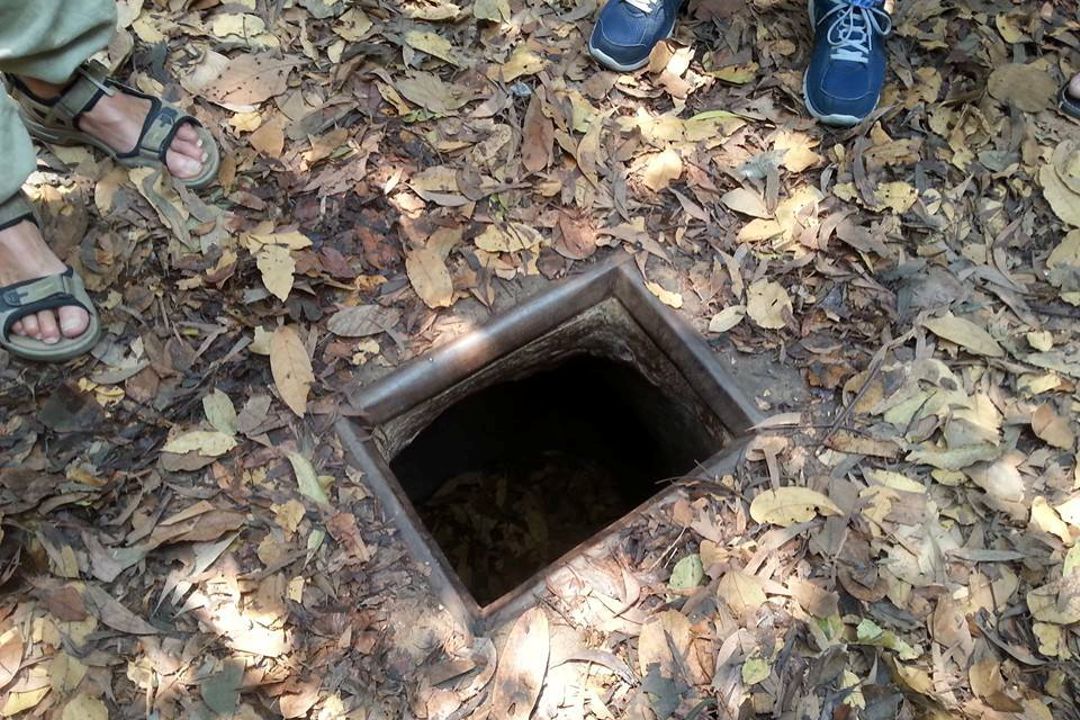
The secret tunnels were constructed in so many different ways, but they were mostly underground.
My stay in Ho Chi Minh City was short and I should have stayed a day longer to boat down the Mekong Delta to see the agricultural heartland of Vietnam and also to watch an authentic water puppet show to experience this timeless cultural treasure. I left Ho Chi Minh City to Mui Ne with wonderful memories and look forward coming back one day.

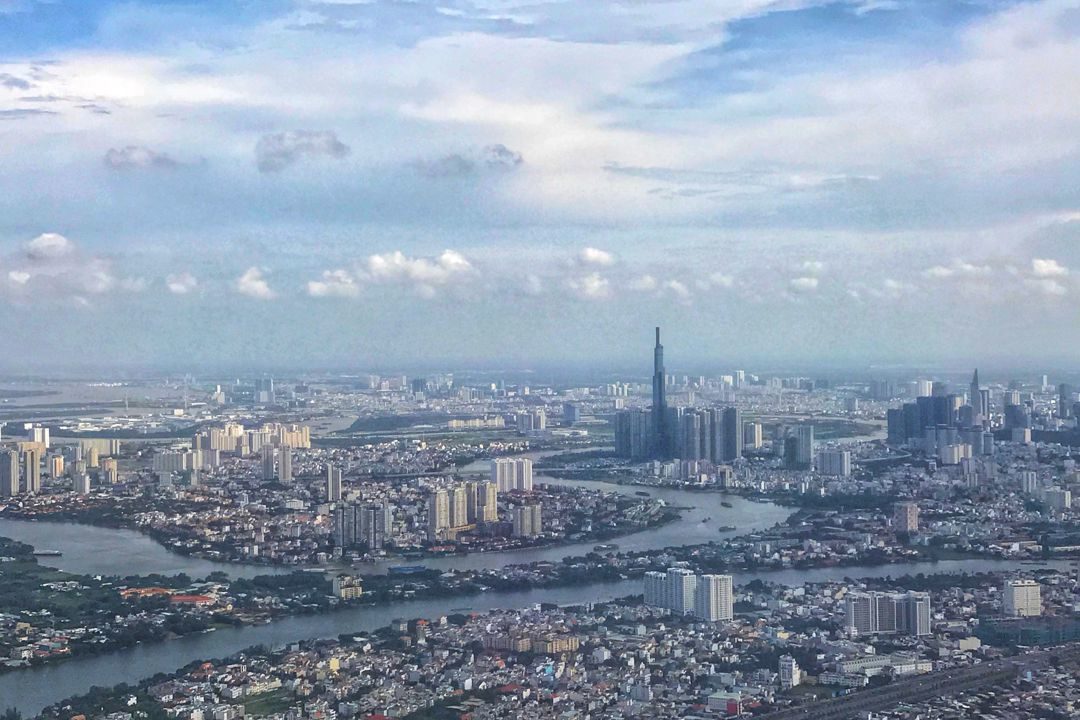
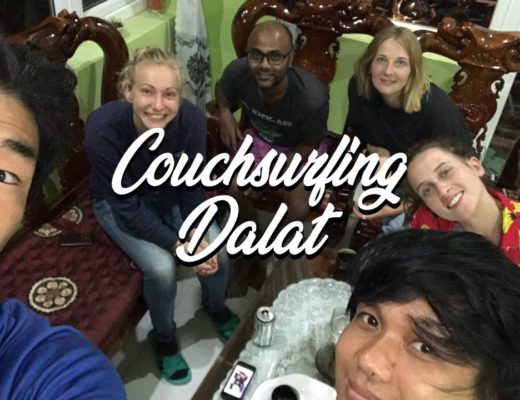
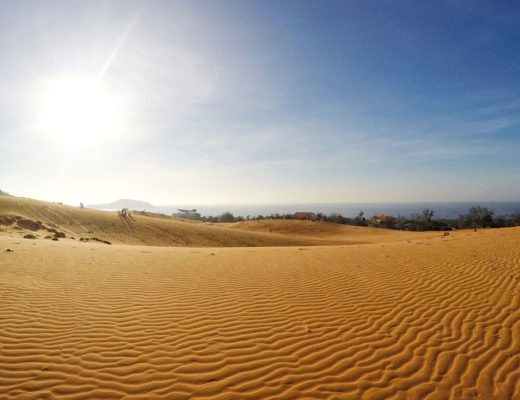
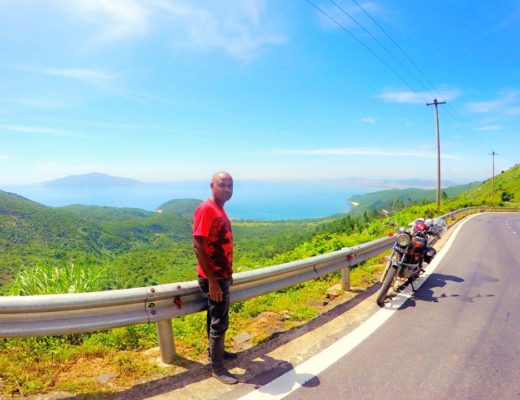
No Comments